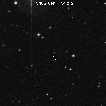V485 Centauri
V485 Centauri
Coordinates: 2000.0 R.A.= 12:57:23.30 Dec.= -33 12 06.8
|
 |
V1500 Cygni was observed in Las Campanas Observatory during 14 nights in May
and June of 1997. The results of this
campaign were described in one paper published in Acta Astronomica
and one note in IAU Circular no. 6666.
|
V 485 Centauri: the Shortest Period SU UMa Star
Acta Astronomica , 1997, Vol. 47, pp. 281-298
Arkadiusz Olech
Warsaw University Observatory, Al. Ujazdowskie 4, Warszawa, 00-478, Poland
June 10, 1995
Abstract:
We report CCD observations of the dwarf nova V485 Cen during its 1997
superoutburst. The long lasting outburst with characteristic slope,
brightness dip and presence of clear superhumps give evidence that V485
Cen belongs to the group of SU UMa-type variables. The superhump period
is equal to 0.042156 +/- 0.000004 days (60.7 min). Thus, V485 Cen has
the shortest known period among SU UMa-type stars, with a period as much
as 25% shorter than previously known objects. The analysis of times of
superhump maxima gives clear evidence for the increase of superhump
period with dPsh/dt = 28.3 times 10-5. This fact
confirms the hypothesis that the shortest periods SU UMa variables
contrary to other stars of this type have positive values of
dPsh/dt.
PDF version of this paper is
available.
IAU Circ. no. 6666
V485 CENTAURI
A. Olech, Warsaw University Observatory, writes: "CCD
observations of the dwarf nova V485 Cen during its recent outburst,
collected with the 1.3-m Warsaw telescope at Las Campanas
Observatory as a subproject of the OGLE-2 project, indicate that
this star belongs to the SU UMa group of cataclysmic variables. A
3-hr I-band observation on May 17.1 UT shows three well-developed
typical superhumps with an amplitude of 0.25 mag and period 57.7
min. Thus, V485 Cen has the shortest known period among SU UMa-
type stars, with a period as much as 25 percent shorter than
previously known objects."